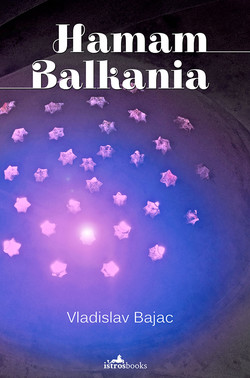Читать книгу Hamam Balkania - Vladislav Bajac - Страница 27
На сайте Литреса книга снята с продажи.
ОглавлениеIt is strange how imagination can conjure up life!
Less than a full month before writing this sentence and only a dozen pages above this one, I compared the behaviour of Orhan Pamuk and myself with ‘kids trading football cards’ as we boasted about who possessed more detailed information about certain events from our mutual Turkish-Serbian past. At the time, that comparison seemed to be a good illustration because I instantly remembered how, at the end of the sixties, on the cobblestones of Belgrade, as children, one part of my one-half impoverished childhood (when Yugoslavia began to arise from the poverty of classical socialism and entered the phase of the unmatched leader of the Non-Aligned Movement and the blasphemous acceptance of the capitalistic standard) was spent in trading cards of famous football players that we collected for our albums of World Football Championships. In addition to the classic trades, we also played ‘knockout’ by which we, in a sporting, victorious way captured individual cards from our opponents in the game. This somehow got us even more involved in the whole story. We had the feeling that we had an influence on getting the prize with our abilities and that it was not just a question of luck. I also remember that no one sold cards to others and that money as a category in this case (regardless of the Leader who was taking us all toward the material world) was not even mentioned, and certainly not used. It was enough to send your completed album to the organisers of the lottery and try your luck at getting picked from the drum for winning the prize.
Why do I bring all of this up? Because coincidences arouse in me an odd sort of superstition that I otherwise do not remember or believe in. In this case, in the meantime, between writing the quoted words and these I am writing now, I was strolling with Pamuk around one of Belgrade’s central squares called ‘Terazije’ (another Turkish word in Serbian). His boyish and never-ending curiosity, and admittedly mine drew us toward the Moskva Hotel and a crowd of about one hundred grown up men and schoolboys. When we drew close, we saw that they were trading football cards for their albums before the beginning of the World Football Championships in June of 2006 in Germany! I was surprised by my intuition, which had precisely described this phenomenon in the manuscript of an unfinished book only a few weeks before and in which, on that occasion, the protagonists were Pamuk and I. I told him about it. Instead of answering, he reacted even more surprisingly: he got noticeably involved with the people and their football cards. The whole situation overwhelmed him completely. I was hardly able to drag him away from there.
I bet that he went back there after I dropped him off, because of a sudden rain shower, at the restaurant of that hotel whose outer walls were all of glass, so he could sit and record his impressions, and draw in his blue notebook what he had seen in his mind’s eye.
Then again, I went back there, too. I discovered that, in today’s childhood as well (for children and adults alike) money has no place. The only difference was, I found out, that there were no prizes for finished albums. And that adults had gotten involved in the game too, apparently in a state of childhood regression. It would be nice if the reason for that were the introduction of a new naïveté in the game. The adults here were not accompanying little kids but were playing equally with them – like kids.
They had never heard of a ‘knockout’.
Perhaps all of this was happening for a reason and not accidentally, right on the square named ‘Terazije’.18
I am certain that, in Pamuk’s notebook, something was recorded about this exchange of the naïve and the establishment of equilibrium (between the large and small participants, the excess and lack of cards). If I only had the least bit of talent for drawing (like Pamuk does), I am sure that I would be in a dilemma about this testimony of simplicity – is it better to write something down or should it be drawn?
It is quite obvious from this account that I have never been much of an expert or fan of football. Like with other phenomena, however, I was attracted by the oddity of its collateral consequences or connections. Not so long ago I watched the film The Cup by the director Khyentse Norbu. This is an incredible melding of Tibetan art and western European film technology (and most likely production money). Against a background of indescribable remoteness and distance from the modern world, we see Tibetan Buddhist priests, in addition to their thousand year-old chanted mantras, along with their completely childlike naïveté, organising their watching of the televised broadcast of the World Football Championships within the gates of their monastery and of their – not so football oriented – beliefs. The absurd connection of the un-connectable through the unbridled humour in this film, shows how everything is human, and especially that which seemingly could never be. In the film, the ‘acting’ is done by Tibetan disciples and teachers themselves, with names (and titles) like Neten Chokling, Lama Godhi, Jamyang Lodro... Thus, once again, local boys and grown men.
It so happens that, soon after my fascination with this film, a friend of mine showed up after just spending a year of his life with these ‘football heroes’ from the top of the world! And like a true kid, he told me, “They’re just like in the film!”
